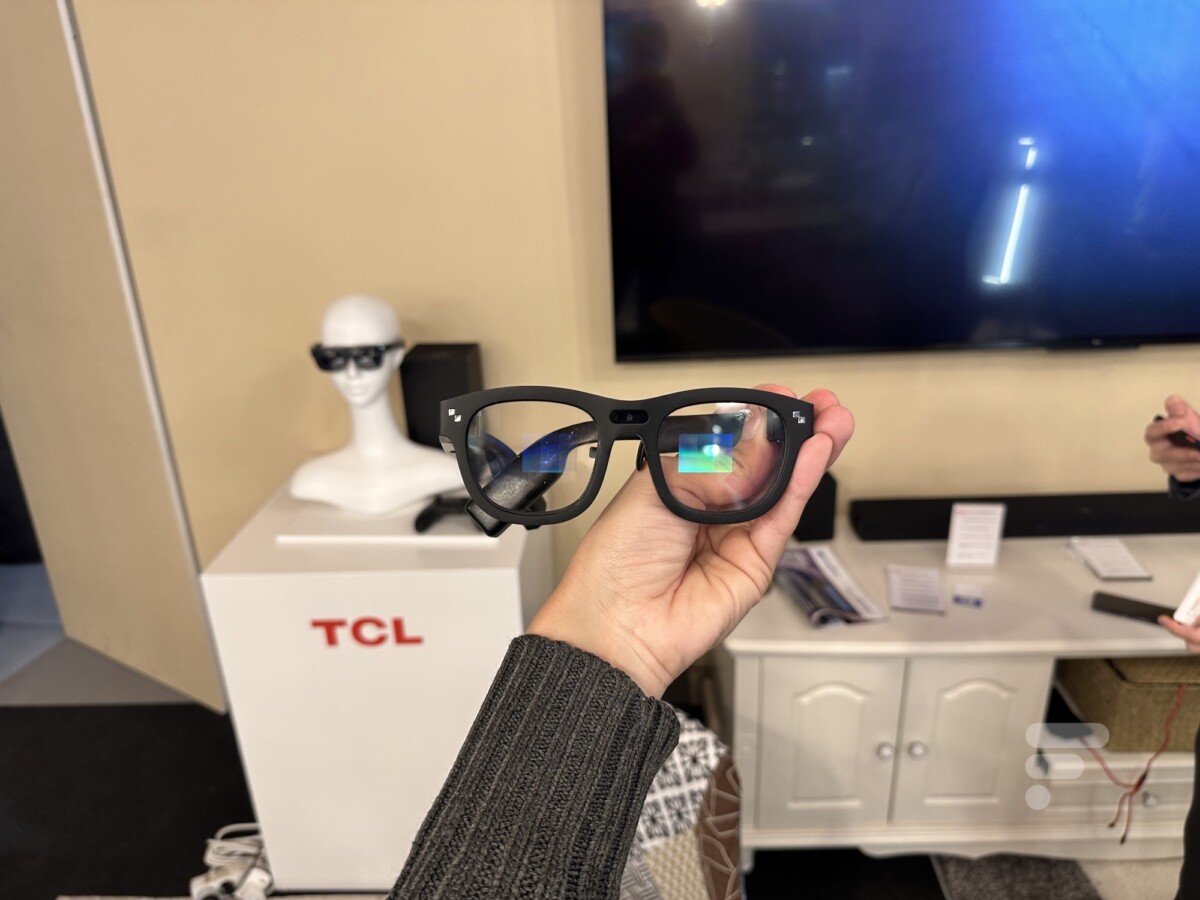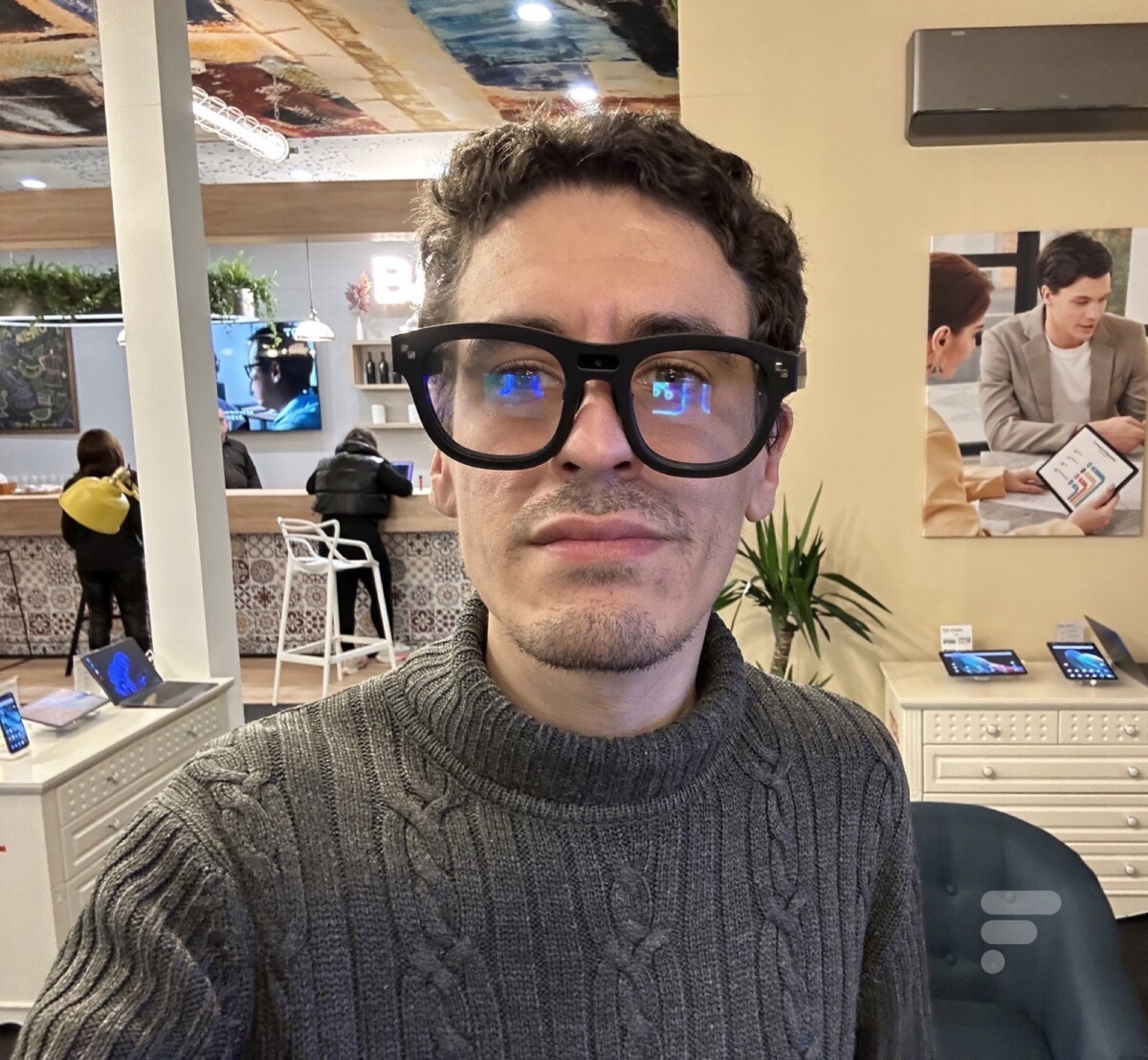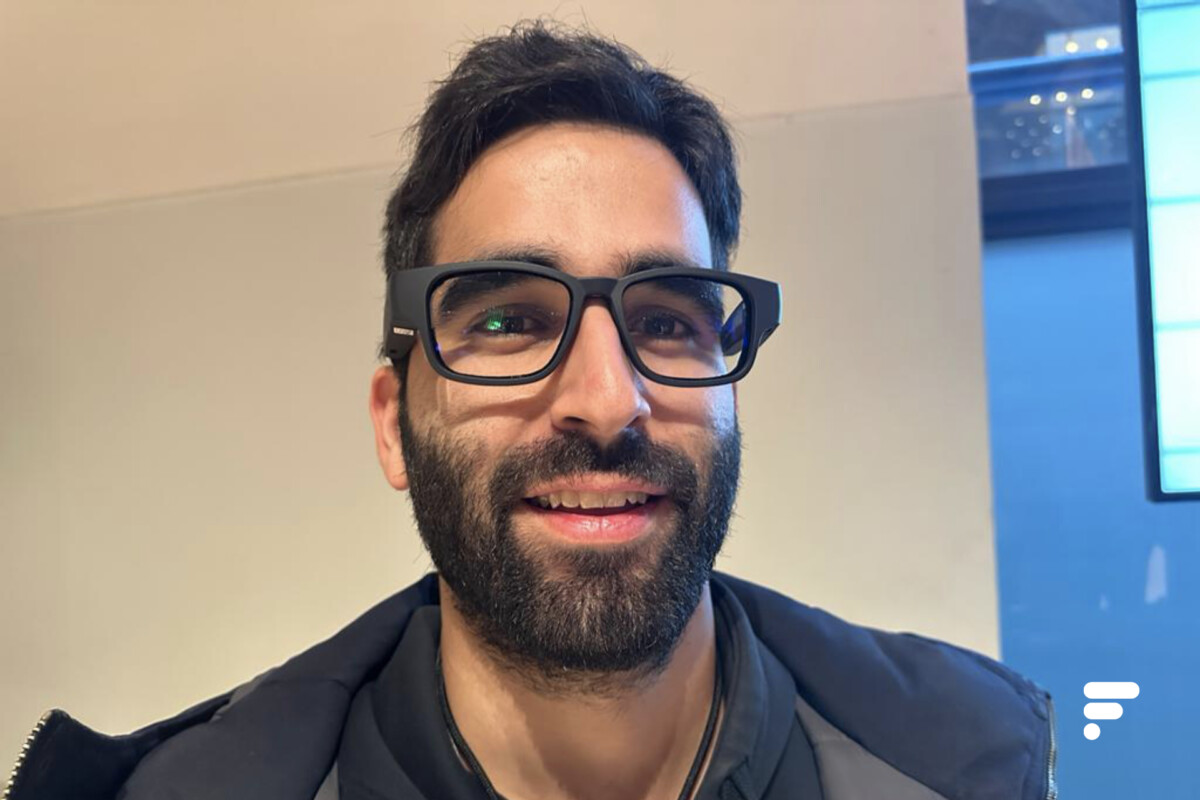While the tech world is still waiting for Apple Glass, a trend was already emerging at MWC 2023. During the Barcelona show, connected glasses have indeed established themselves as one of the biggest trends to follow.
While the rumors around Apple Glass have gained momentum, the MWC 2023 has finished putting connected glasses at the center of the news. The impression that emerged from the Barcelona show was that each manufacturer went there with their own device. Back on the different models that we were able to take in hand or see closely.
Xiaomi Wireless AR Glass Discovery Edition
This is the announcement that officially marked the launch of what will remain as the big trend of MWC 2023. Xiaomi has unveiled connected glasses which, if they are not intended to be sold, demonstrate the future possibilities of this type of device.

Source: Xiaomi

Source: Xiaomi

Source: Xiaomi
We were able to see two members of the Chinese firm wearing them live and the promises are numerous: home automation managed entirely by fingers thanks to the cameras housed on the device, video game in AR on the coffee table in the living room, internet browsing in AR … all in a format under 150 grams and with a Micro Oled display. Let’s face it, it makes you want to.
Still, for the moment, all this remains very theoretical. During the presentation, we got the impression that the demonstrators didn’t really use the glasses, sometimes faking certain activities. Should we read here the desire to adapt to the constraints of a presentation in a small room full of journalists, or an admission of the work that remains to be done to make the product viable? Since Xiaomi does not market it and did not let us touch it, the brand probably answers the question itself.
TCL RayNeo X2
We were also able to put the TCL RayNeo X2 glasses in front of our eyes during a private presentation. It is undoubtedly the most convincing product of this type among those presented at the show. Once again, we are faced with a prototype of a product that TCL would like to market in 2023, but that the brand will first offer to developers.

If these glasses are so convincing, it is because they incorporate two microLED projectors and the Qualcomm Snapdragon XR2 platform. The first are real transparent and color screens with an announced brightness of up to 1000 cd/m2. Competing glasses rely on screens displaying only green. Here, we had all the colors with a rather correct definition.
Navigation in the interface is done by the branches, and TCL already imagines the simplest applications such as photo capture, music playback or sending messages. The most impressive was undoubtedly the demo of a real-time translation application. In front of us, the interlocutor spoke in Chinese, and the glasses could offer English subtitles in real time.

Obviously, we are still in front of a prototype and the design of the current version still leaves something to be desired. They are big glasses with a battery and the smart part at the end of each branch. The price is still completely unknown.
Oppo Air Glass 2
Oppo for their part has opted for a much more minimalist and concrete concept. We were indeed able to put the Oppo Air Glass 2 on our nose and play a little with it.
First observation: rather than having two parts like on most glasses, one for the screen and one for the glass, here we had a glass onto which the interface was projected. The weight is immediately affected, hence the name Air no doubt: 38 g.

Then, Oppo opted for a very simple interface: a few green pixels fight a duel to display basic functionalities. We were able to check the weather, see the time, read a text by scrolling on the arm of the glasses and listen to music. Unfortunately, the most interesting parts were not yet implemented. We think of the ability to subtitle and translate the words of an interlocutor live. Undoubtedly one of the reasons why the Air Glass 2 are not yet marketed.
Huawei Vision Glass
In the field of connected glasses, there are those that rely on AR and those that think they are televisions. From what we have seen, the Huawei Vision Glass falls more into the latter category.
Their tinted glasses cut completely with the exterior and the interface invites you to consult video content or sites. A way to replace a screen, for example, with a much more compact object. A detail chafouinés us during our grip. The screen seemed really small. Difficult to see an interest in these conditions.
In addition, the author of these lines wearing glasses, I found it complicated to wear these second glasses. And unfortunately, impossible for me to remove them. The small rulers on the two upper corners of the glasses used to accommodate did not help me much. A colleague from another medium, who also wears glasses, has however managed to accommodate his sight, so it may depend on your level of correction.
Tooz Essnz Berlin
Tooz is a company created jointly by Deutsche Telekom and Zeiss. As a reminder, the latter is an expert in optics and it is precisely this know-how that is highlighted in the Essnz Berlin glasses. The purpose of this device is to offer an augmented reality experience through glasses adapted to your sight and which you will also obtain via a prescription from your ophthalmologist. All while ensuring a comfortable fit over the nose and ears thanks to a relatively space-saving design that tops out at 60 grams.

The sobriety displayed is also found in the augmented reality features offered. We are getting closer here to what Oppo’s Air Glass 2 does. Indeed, the Essnz Berlin are content with a small microLED screen of 480 x 640 pixels displaying summary content in green in front of the right eye. What quickly consult an incoming notification, be guided step by step on a GPS route, see the weather, etc.
During our quick test on the small stand of Tooz, we were able to find glasses more or less adapted to Omar’s myopia. The ease of use was there and the layout of the information in front of the eye, in a corner, is well thought out. However, the display in green is not necessarily always pleasant for the retina.
Buttons allow navigation in the interface, but it is also possible to control the device by voice. Amazon Alexa and Google Assistant seem to be compatible, but during the demonstration we were treated to, it was, strangely, Samsung Bixby who was in charge. The Tooz glasses are paired with your smartphone via a companion app and Bluetooth 5.0.

With normal usage, a person is expected to be able to use these AR glasses all day before needing to charge them. Tooz clearly hints that the Essnz Berlin may be released, but we don’t have a date or price yet.
Samsung’s future glasses?
Finally, we will recall in passing that this trend for connected glasses is also carried by Samsung, but from afar. The Korean giant had nothing to show on that side at MWC 2023. However, several clues indicate that Samsung would also be working on connected glasses.
Want to join a community of enthusiasts? Our Discord welcomes you, it’s a place of mutual aid and passion around tech.
